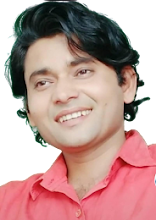 The Great Inventors in Computer Field
The Great Inventors in Computer Field
Charles Babbage: The Analytical Engine(1822)
Alan Turing: The Turing Machine
The English mathematician and computer scientist- provided a platform for formulating the basic concept of algorithm and destined the Turing machine, that was able to test the intelligence of a machine.
Konrad Zuse: The Z Series Computers
The German engineer, Konrad Zuse, in 1936, invented the first electrical binary programmable computer - the Z1. Z2 and Z3 were also introduced by Zuse in 1939 and 1941 respectively.
John Vincent Atanasoff & Clifford Berry: Atanasoff-Berry Computer (ABC)
Developed in the war phase of 1942, Atanasoff-Berry Computer (ABC) was the world's first fully electronic digital computer.
The US Army: ENIAC -Financed by the US army and developed by scientists John Presper Eckert & John W. Mauchly, in 1946, the Electronic Numerical Integrator and Computer (ENIAC) is considered to be the first mainstream digital computer ever made.
Father of the personal computer - Henry Edward Roberts released Altair 8800 on December 19, 1974
The first laptop or portable computer - IBM 5100 (1975)
The first Apple computer - Steve Wozniak designed the first Apple known as the Apple I (1976)
Inventors in computer programming and development
Dennis Ritchie : He created the C programming language
Brian Kernighan : contributed to the development of Unix, He is also coauthor of the AWK and AMPL programming languages.
Bjarne Stroustrup : developed C++ programming language.
Niklaus Wirth : developed PASCAL programming language
James Gosling : Father of the Java programming language.
Larry Wall : Developed Perl programming language in 1987.
Guido van Rossum : Author of the Python programming language.
Richard Matthew Stallman : foundi Free Software Foundation, developing the GNU Compiler Collection and GNU Emacs, and writing the GNU General Public License.
Bill Joy: co-founder of Sun Microsystems in 1982 along with Vinod Khosla, Scott McNealy and Andy Bechtolsheim.
Philippe Kahn : who is credited with creating the first camera phone sharing pictures instantly on public networks.
Important founders in the field of Computer Technology
Paul Allen : Co-founder of Microsoft Corporation along with Bill Gates, a leading developer of personal-computer software systems and applications.
Bill Gates : William Henry "Bill" Gates III is an American business magnate and philanthropist. Gates is the former chief executive and current chairman of Microsoft, the world’s largest personal-computer software company, which he co-founded with Paul Allen.
Larry Ellison : Lawrence Joseph "Larry" Ellison is an American business magnate, co-founder and chief executive of Oracle Corporation, one of the world's leading enterprise software companies.
Larry Page : Lawrence "Larry" Page is an American computer scientist and internet entrepreneur who, with Sergey Brin, is best known as the co-founder of Google. On April 4, 2011, he took on the role of chief executive officer of Google, replacing Eric Schmidt.
Sergey Brin : Sergey Mikhaylovich Brin is a Soviet-born American computer scientist and Internet entrepreneur who, with Larry Page, co-founded Google, one of the most profitable Internet companies. As of 2012, his personal wealth is estimated to be $20.3 billion.
Steve Jobs : Steven Paul "Steve" Jobs was an American entrepreneur. He is best known as the co-founder, chairman, and chief executive officer of Apple Inc
Robert Taylor :Robert William Taylor, known as Bob Taylor, is an Internet pioneer, who led teams that made major contributions to the personal computer, and other related technologies.
Paul Baran : Paul Baran was a Polish American engineer who was a pioneer in the development of computer networks
Vint Cerf : Vinton Gray "Vint" Cerf is an American computer scientist, who is recognized as one of "the fathers of the Internet", sharing this title with American computer scientist Bob Kahn.
Robert E. Kahn : Robert Elliot "Bob" Kahn is an American Internet pioneer, engineer and computer scientist, who, along with Vinton G. Cerf, invented the Transmission Control Protocol and the Internet Protocol.
Inventors of Computer Hardware
(1) Key board — Herman Hollerith, first keypunch device in 1930’s
(2) Transistor — John Bardeen, Walter Brattain & Wiliam Shockley (1947 - 1948)
(3) RAM — An Wang and Jay Forrester (1951)
(4) Trackball — Tom Cranston and Fred Longstaff (1952)
(5) Hard Disk — IBM , The IBM Model 350 Disk File (1956 )
(6) Integrated Circuit— Jack Kilby & Robert Noyce (1958)
(7) Computer Mouse — Douglas Engelbart (1964)
(8) Laser printer— Gary Stark weather at XEROX in (1969)
(9) Floppy Disk— Alan Shugart & IBM( 1970)
(10) Microprocessor — Faggin, Hoff&Mazor – Intel 4004


.png)


